
Mammut Eisfeld Light SO Hoody and Pant
Reviewer: 5’10”, 140 lbs
Mammut Eisfeld Light SO Hoody
Size Tested: Medium
Blister’s Measured Weight: 460 grams
Material: Schoeller Dryskin softshell with Mammut Phase Map Seamless Reinforcement (4-way stretch) w/ Ecorepel DWR (PFC-free and organic treatment)
Stated Features:
- Coldblack® treatment helps to stop dark colors overheating in sunlight
- Mammut® Vertical Motion Technology™ for optimized ergonomics during alpine movement sequences
- Mammut High Reach Technology™ for unrestricted freedom of movement when climbing
- Mammut Single Pull Hood™: storm-proof, helmet-compatible hood with reinforced peak, can be adjusted both vertically and horizontally with a single pull
- Chest pocket with recessed bonded zippers
- YKK Vislon® 2-way zipper for smooth operation
- The drawstring on the hem can be adjusted with one hand using a cord that can be stowed on the inside
Pockets:
- One chest pocket (zippered)
MSRP: $350
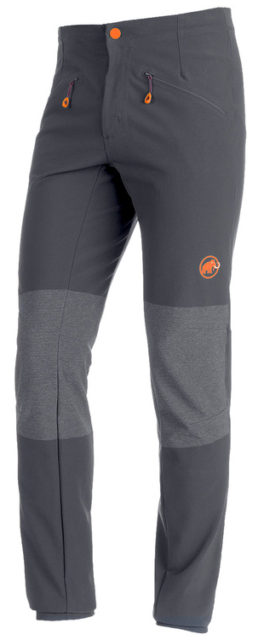
Mammut Eisfeld Light SO Pant
Size Tested: Medium
Blister’s Measured Weight: 298 grams
Material: Schoeller Dryskin softshell with Mammut Phase Map Seamless Reinforcement (4-way stretch) w/ Ecorepel DWR (PFC-free and organic treatment)
Stated Features:
- Flat elastic waistband with an inner drawstring that creates no extra bulk under a climbing harness
- Special Tightlock button that cannot open on its own
- 2 climbing-harness-compatible front pockets with recessed bonded zippers
- Elastic leg hem
Pockets:
- 2 front hand pockets (zippered)
MSRP: $325
Test Locations: Front Range, CO
Days Tested: ~10
Intro
The Mammut Eisfeld Light SO kit (Eisfeld is German for “icefield”) is a soft shell kit designed for alpine climbing and mountaineering, and features a new technology from Mammut and Swiss textile manufacturer Scholler that changes the weave structure of the fabric without using a seam (similar to The North Face’s FuseForm tech).
Those of you who are regular readers of Blister are likely familiar with my appreciation (or perhaps, obsession) with soft shell outerwear. Some of you are also probably familiar with my love of new and innovative fabric technology.
Well the Eisfeld Light kit checks both boxes: it’s made of a soft shell material, and features a cool new fabric construction technology. So naturally, I’ve been very excited to check out this kit.
Fit
The Eisfeld Light kit has very slim, athletic fit. This a purpose-built piece for moving efficiently in the mountains, and the fit reflects that.
I’m 5’10”, 140 lbs, and the Eisfeld Light Hoody fits very slim in the torso and shoulders. The size Medium hoody leaves enough room for me to layer a midweight mid layer underneath (e.g., the Patagonia Nano Puff Jacket or North Face Ventrix Hoodie), but it is a bit of a tight squeeze. In most cases, I find myself putting on insulating layers over the Eisfeld Light Hoody, rather than under. This tends to work well though because I usually leave the hoody on all day, so regulating warmth with insulators worn over it works just fine.
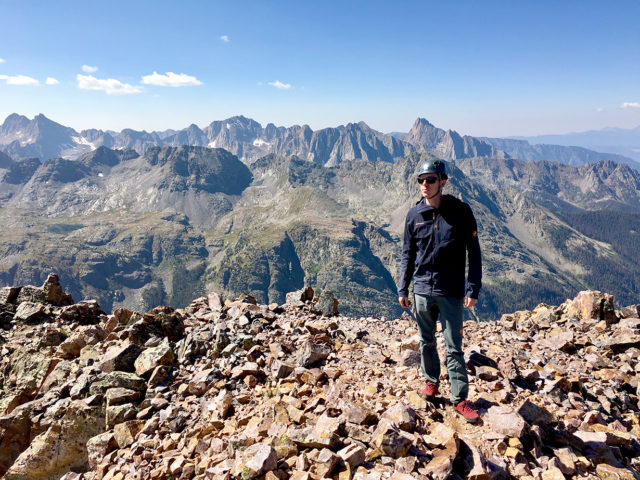
The arms and torso of the Eisfeld Light Hoody are both quite long for an alpine shell. The sleeves come just past my first knuckle and the hem drops low enough for full butt-coverage. This is great for keeping the jacket tucked under my harness.
The hood is big enough to fit over a standard climbing helmet, though it is a bit snug.
The Eisfeld Light Pants are also quite slim. They taper from an average-width thigh to a slim cuff. The cuff is easy to roll up and out of the way when wearing climbing shoes and can be pulled over most mountaineering boots (probably not double boots, though I haven’t tried). Despite the slim fit, the material is extremely stretchy so range of motion is still quite good. When it comes to waist-width, the Eisfeld Light Pants seem to fit pretty true to size.
And while both the Eisfeld Light Pants and Hoody are quite slim, range of motion throughout the kit is exceptional — especially in the jacket. The very stretchy fabric, combined with intelligent patterning, makes for a climbing shell that hardly rides up at all when reaching for high holds.
Materials
One of the things about this kit that got me excited is the Phase Map fabric tech. Similar to a few other companies on the market, Mammut, in partnership with Schoeller, is using a fabric that changes weave patterns to reinforce high wear areas (in this case, the elbows and knees) without creating extra seams.
The Mammut version of this tech that’s used on the Eisfeld Light kit seems to work quite well. The reinforced areas definitely feel more durable than the other parts of the fabric. In ~10 days of hard testing, there is no real sign of wear on these panels, and there is minimal, but not unexpected wear on the rest of the kit.
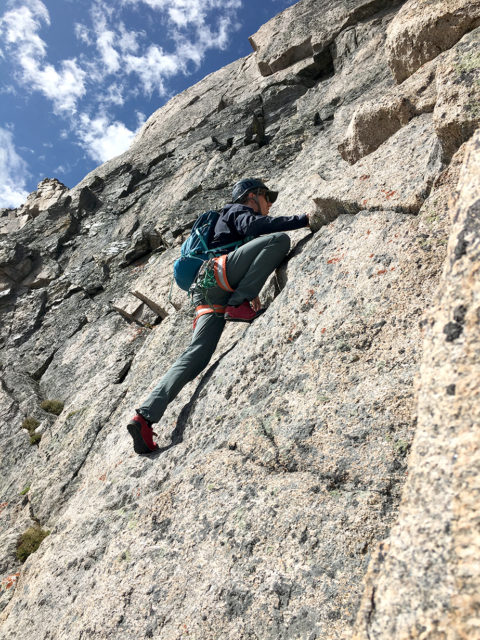
My only complaint in regard to the Phase Map tech is the way that it is integrated into the kit as a whole. In general, technologies like this should be used to eliminate seams (which in turn reduces weight and bulk while increasing durability). But the Eisfeld Light kit still has more seams than most other alpine soft shells I’ve used.
In the arms of the hoody, there are 3 seams that run the full length of the sleeve. This, especially when combined with the hoody’s slim fit, adds bulk and makes the jacket less comfortable than other, similar pieces (like the Patagonia Levitation Hoody). With that said, I do think that these seams and patterning seem to contribute to the kit’s increased range of motion due to the articulation they create. But while there is definitely a give-and-take when it comes to seams, patterning, and ROM, in this case, the added seams do slightly annoy me (given the intent of the Phase Map tech).
Overall, I think the Schoeller Dryskin fabric of the Eisfeld Light kit is excellent. It’s very stretchy, soft, comfy against the skin, and has proven to be pretty durable (so far at least, I’ll update this review if that changes).
Features
Both the Eisfeld Light Hoody and Pants are pretty minimal. The hoody has a single chest pocket and no internal or handwarmer pockets. The cuffs are minimal without any closure system, and the hood has a single point of adjustment with an elastic piece under the brim.
The Eisfeld Light Pants have two front zip pockets, small pieces of grippy silicone on the cuffs, and a stretchy waistband with a drawstring.
Overall, the minimalism in the kit works well when used for climbing. While alpine climbing, the Eisfeld Light kit definitely shines. But once the harness comes off, I find myself missing features like internal and handwarmer pockets on the hoody.
The Eisfeld Light Pants definitely work better than the jacket outside of technical climbing, but I still wish I had a zippered lower thigh pocket for storing bars, trash, etc.
Weight
The Eisfeld Light kit is minimal in terms features, and that keeps the weight reasonably low (especially given that the kit’s fabric is a bit heavier than many similar soft shells). But both the hoody (460 g) and pants (298 g) are still a bit heavier than some other soft shell options.
With that said, it’s important not think of the weight of the Eisfeld Light kit as an apples-to-apples comparison to hard shells. The Eisfeld Light Hoody is designed to be worn all day, rather than a hard shell that often sits in your pack most of the day. Jackets definitely feel lighter when worn rather than packed, and being able to keep your jacket on all day is one of the main benefits of soft shells like the Eisfeld Light Hoody.
Weather Resistance
This Eisfeld Light kit offers a bit more weather protection than some more minimal soft shells (like the Patagonia Levitation), but comes up significantly short when compared to soft shells with a membrane (like the Patagonia Knifeblade or Rab Kinetic Plus).
The Eisfeld Light’s fabric blocks a good amount of wind, but in strong winds, I definitely feel some air coming through. I would say that the Eisfeld Light blocks roughly around 80% of wind.
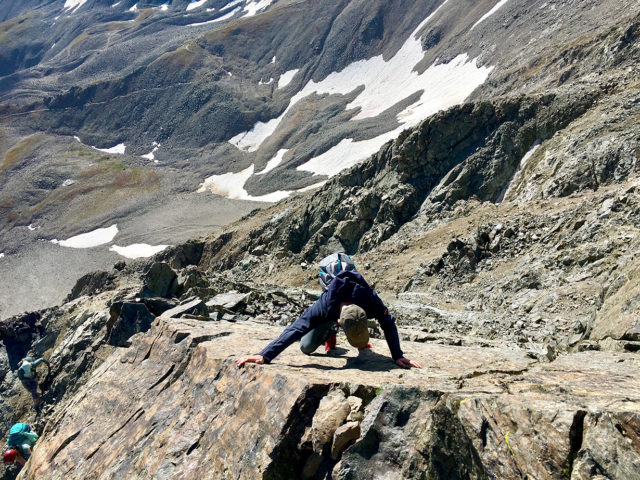
When it comes to precipitation, the Eisfeld Light kit’s “ecorepel” DWR (which is PFC-free) performs about as well as standard DWR’s I’ve used, but the fabric will still wet out much faster than a hard shell. Conversely though, the fabric dries very quickly — especially considering how relatively thick it is.
Warmth
One of the biggest differentiating factors between the Eisfeld Light kit and other soft shells I’ve used is the warmth. The Eisfeld Light kit uses a thicker stretch-woven material that retains more heat than many of the more minimal soft shells I’ve used.
The Eisfeld Light fabric is by no means fleecy or bulky, but it is a bit thicker than the Levitation’s fabric and similarly thick to the fabric used on the Patagonia R1 TechFace Hoody.
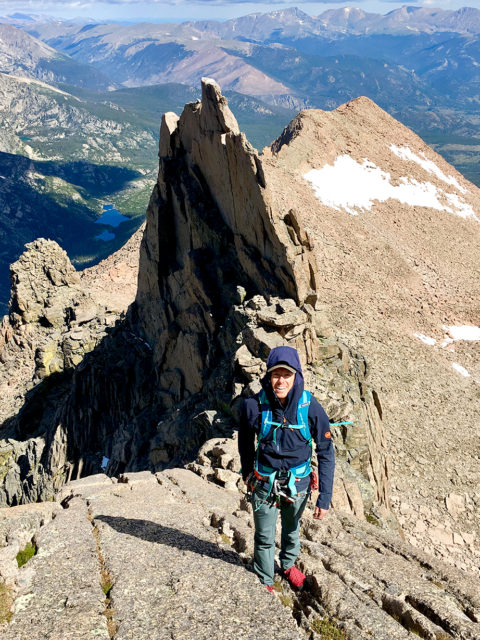
I think the Eisfeld Light kit is a bit warm for 3-season use in a place like Colorado. In the kit, I continually find myself overheating, especially when leaving the cooler, higher elevations later in the day. For colder ranges like the Alps, Canadian Rockies, or Northern Cascades, I think the Eisfeld Light kit will be a great fit.
Breathability
Because it uses a bit of a thicker fabric than some other soft shells, the Eisfeld Light kit doesn’t breathe as well as thinner stretch-woven soft shells. However, it still breathes far better than soft shells with a membrane (e.g., the Patagonia Knifeblade).
For alpine climbing, the Eisfeld Light kit breathes about right. I’m never exerting myself at a very high level when roped up in the alpine, but when I do sweat, the Eisfeld Light Hoody and Pants breathe and dry well enough so that I’m not left soaking wet at the next belay station.
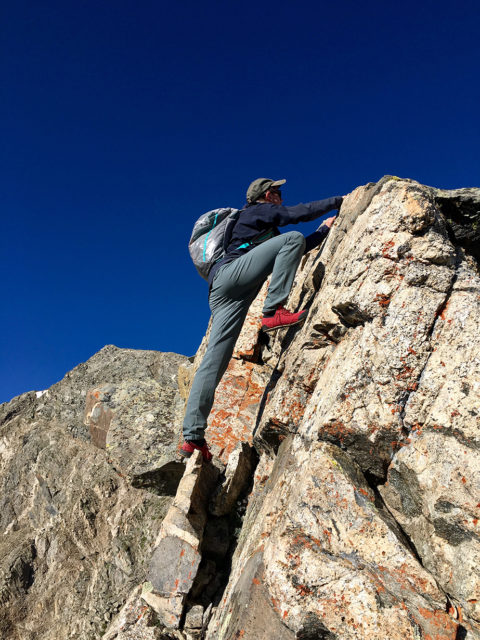
When wearing the Eisfeld Light Hoody on the approach or the hike out, I can certainly sweat more than it can breathe. The pants are a similar story — I often overheat a bit on my way to and from the climb. But when it comes to the actual climbing, the kit does quite well. I wouldn’t wear the Eisfeld Light Pant as a cragging pant, but for long days in the alpine (especially in colder climates), it’s a solid option.
Durability
After grinding up coarse granite chimneys and being stuffed in and out packs for about 10 days, I haven’t noticed any major signs of wear on the Eisfeld Light Hoody or Pants. The kit seems to be quite hardwearing. I will update this review if anything out of the ordinary pops up in the future.
Who’s It For?
If you are looking for a trim-fitting, minimal, alpine soft shell kit — especially if you climb in colder mountain ranges like the Canadian Rockies, Alps or Northern Cascades — then the Eisfeld Light kit is definitely worth a look.
Bottom Line
The Mammut Eisfeld Light Hoody and Pants are a interesting, high-performance soft shell pieces with a cutting-edge fabric construction. Utilizing a new weave technology, minimal silhouette, and a very comfortable (albeit slim) cut, the Eisfeld Light is a good 3-season kit for an alpine climber or mountaineer, especially if you climb in colder ranges and tend to have your harness on more often than not.
